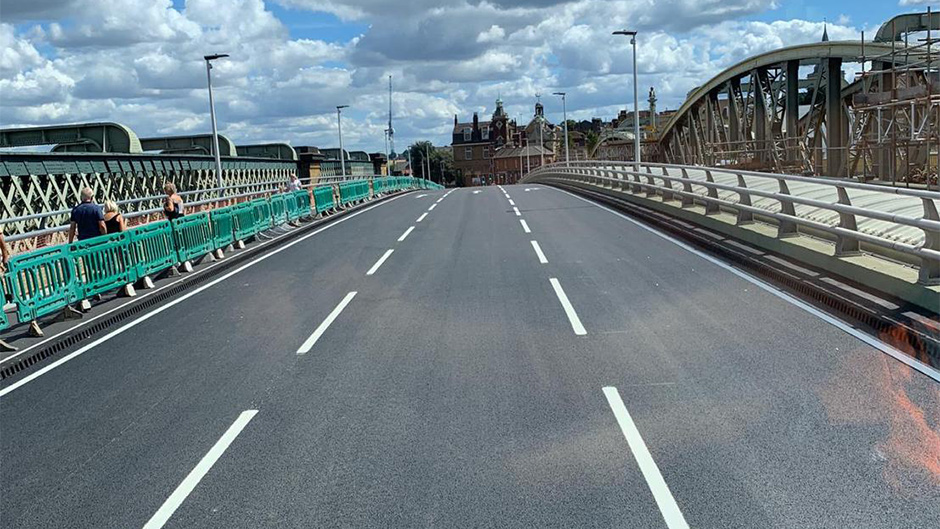Where possible, the Rochester Bridge Trust carries out maintenance works one lane at a time, preferably overnight but at the very least during off peak hours.
During the Rochester Bridge Refurbishment Project, this brief has been followed as much as possible. We’ve also carried out as many activities as possible when any given area of a bridge or esplanade is closed. This maximises productivity and minimises disruption.
However, recently – for the first time in decades – the Trust decided to schedule a continuous full closure of the New Bridge for a whole weekend.
This was because one weekend of closure enabled works to be carried out that will minimise the need for future disruption.
The work carried out at this time was the complete resurfacing of the bridge.
While it is possible to resurface the bridge one lane at a time, this increases the likelihood of potholes developing – and the necessary disruption to repair them – so a programme was drawn up to create one continuous surface across both lanes.
Lead contractor FM Conway used two Blaw Knox machines side by side, removing the need for a cold joint and reducing the risk of water ingress and premature deterioration or failure of the bituminous layer.
The idea was that short-term pain would create a long-term gain in the reduction of future disruption.


